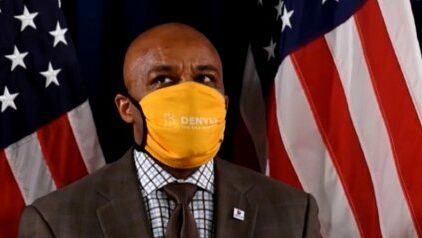More than 17.81 million cases have been diagnosed and more than 317,000 deaths have been confirmed in the United States.
According to the statistics released by Johns Hopkins University in the United States, as of 6:27 p.m. Eastern Time on the 20th, that is, 7:27 a.m. Beijing time today (21st), the cumulative number of confirmed cases of COVID-19 in the United States is approaching 17.82 million, increasing to 1781,583.
The number of deaths has increased to 317,588, and the United States is now the country with the highest cumulative number of confirmed cases and deaths in the world.
California’s epidemic is in an emergency. Doctors say that the virus is in full swing.
California is the most affected state in the United States. As of the early morning Beijing time, California has more than 1.87 million confirmed cases of COVID-19.
If California is ranked as a country, its cumulative number of confirmed cases ranks ninth in the world. California’s cumulative number of deaths has also exceeded 22,000. Example.
Under the severe epidemic, California’s medical system continues to face great pressure, and the remaining beds in intensive care units in many places are zero.
Thomas Jadgar, the head of the intensive care unit at a California hospital, said in a recent interview with CNN that they are currently facing a “full war” against the novel coronavirus.
Thomas Yadegarh, head of the hospital’s intensive care unit: The situation is very horrible. It’s much worse than in the previous nine months. No matter how hard we try to treat patients and stabilize their condition, when a patient recovers and returns home, four more seriously ill patients are lining up in his bed.
In the past four In the past few months, the hospitalized patients’ condition has become more and more serious. They also know that the hospital is hard to find a bed. They try to wait. I have patients waiting for a long time for the hospital. I asked them why they didn’t come early. Their answer broke my heart. They said that I don’t want to occupy other people’s beds. Other patients are more serious and need more rescue.
Yadegal said that after the traditional holiday last month, the number of cases in California surged again, and the experience of many patients he visited showed that the novel coronavirus “uses people’s desire to reunite with relatives and friends on holidays” and that people will be infected as long as the epidemic prevention measures are slightly relaxed.
According to the data, on November 1, California’s seven-day average number of new confirmed cases in a single day was 4,183. After just one and a half months, on the 17th of this month, the figure quadrupled to 38,774. On the 17th, the actual number of new confirmed cases in California exceeded 50,000.
As of the 18th local time, more than 16,000 people with COVID-19 have been hospitalized in California, including about 3,000 in severe cases. According to the data as of the 17th, California has fewer than 1,300 intensive care beds in the state. Health care workers in Los Angeles, the “epicenter” of the California epidemic, say they are being crushed.
Brad Spielberg, Chief Medical Officer of USC in Los Angeles County: We are overwhelmed. I’m not going to whitewash the peace. We are overwhelmed. For most of the past week, the intensive care beds in the morning have been zero.
U.S. officials’ epidemic prevention “say one thing and do one thing” provoked public anger.
Since the outbreak of the COVID-19 epidemic, doubts and opposition to epidemic prevention measures such as “wearing masks”, “reducing gatherings” and “avoiding travel” in the United States have not stopped. In a recent report, ABC pointed out that this has a lot to do with the hypocritical behavior of some American officials.
During the holiday last month, the mayor of Denver, Colorado, flew to Mississippi for a holiday while urging people to avoid traveling.
A mayor of Pennsylvania asked for a ban on indoor dining in restaurants, but he himself dined in a Maryland restaurant.
There are many U.S. officials who do not comply with the epidemic prevention regulations issued by themselves: the governor of Rhode Island was witnessed going to a bar for drinks; the mayor of Austin, Texas, took a private plane to Mexico after a wedding; the governor of California had dinner with many people in a restaurant; the day before.
The mayor of San Francisco also held a birthday party in this restaurant.
ABC reported that the American people are worried about whether they can go out to work or shop, while these officials go out to play unscrupulously.
Many experts and scholars in the United States pointed out that “these bad examples may make more Americans question and unwilling to comply with epidemic prevention regulations” and “it is the hypocritical performance of these politicians who are not in line with their words and deeds that plunge the American people into chaos”.
Because some Americans will feel that most of these politicians are well-educated, know more and well-informed. “If they don’t take the epidemic seriously, then the epidemic will be nothing terrible.”
Melinda Jackson, a professor of political science at San Jose State University, said in an interview that the United States is in a crisis of a surge in COVID-19 cases, hospitalizations and deaths, and officials should “cede by example” to make the public aware of the seriousness of the epidemic.



